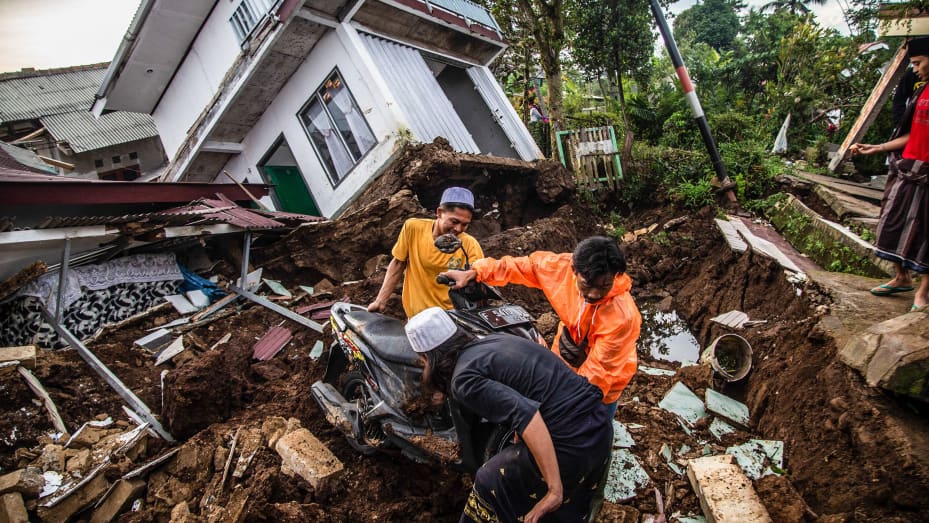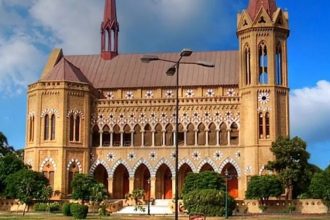Indonesian rescue workers were racing on Tuesday to reach people still trapped in the rubble a day after an earthquake devastated a West Java town, killing at least 162 people and injuring hundreds, as officials warned the death toll may rise.
The epicentre of the shallow 5.6-magnitude quake hit on land close to the town of Cianjur in a mountainous area of Indonesia‘s most populous province. The tremor on Monday afternoon prompted panicked residents to flee onto the streets as buildings collapsed.
Many of the fatalities were caused by falling buildings, the head of Indonesia’s meteorology and geophysics agency, Dwikorita Karnawati, said in a statement.
Overnight a hospital parking lot in Cianjur was inundated with victims, some treated in makeshift tents, others hooked up to intravenous drips on the pavement, while medical workers stitched up patients under the light of torches.
“Everything collapsed beneath me and I was crushed beneath this child,” Cucu, a 48-year-old resident, told Reuters, from the crowded hospital parking area.
“Two of my kids survived, I dug them up … Two others I brought here, and one is still missing,” she said through tears.
On Tuesday morning, hundreds of police officers had been deployed to assist in rescue efforts, Dedi Prasetyo, a national police spokesperson told the Antara state news agency.
“Today’s main task order for personnel is to focus on evacuating victims,” he said.
At least 162 people were killed in Monday’s quake, many of them children, with more than 300 injured, West Java Governor Ridwan Kamil said, warning some residents remained trapped in isolated places.
Authorities were operating “under the assumption that the number of injured and death will rise with time”, he said.
“The challenge is the affected area is spread out … On top of that, the roads in these villages are damaged,” Henri Alfiandi, head of the National Search and Rescue Agency (Basarnas), told a news conference.
“Most of the casualties are children because at 1pm they were still at school,” he said of the time the quake hit.
Basarnas confirmed that 162 people had died and more than 13,000 people had been evacuated.
The national disaster agency (BNPB) said 62 people were killed, and it was yet to verify the 100 additional victims.
Cianjur police chief told Metro TV news channel that 20 people had been evacuated from Cugenang so far, most of whom had died, with residents still reporting missing family members.
The area was hit by a landslide triggered by the quake that had blocked access to the area.
“At least six of my relatives are still unaccounted for, three adults and three children,” said Zainuddin, a local resident from Cugenang.
“If it was just an earthquake only the houses would collapse, but this is worse because of the landslide. In this residential area, there were eight houses, all of which were buried and swept away.”
Rescue efforts were complicated by electricity outages in some areas and 117 aftershocks.
The earthquake, which struck at a depth of just 10 km (6.2 miles) and was felt strongly in the capital Jakarta about 75 km away, damaged at least 2,200 homes and displaced more than 5,000 people, the BNPB said.
Straddling the so-called “Ring of Fire”, a highly seismically active zone where different plates on the earth’s crust meet, Indonesia has a history of devastating earthquakes.
In 2004, a 9.1 magnitude quake off Sumatra island in northern Indonesia triggered a tsunami that struck 14 countries, killing 226,000 people along the Indian Ocean coastline, more than half of them in Indonesia. (Reuetrs)






